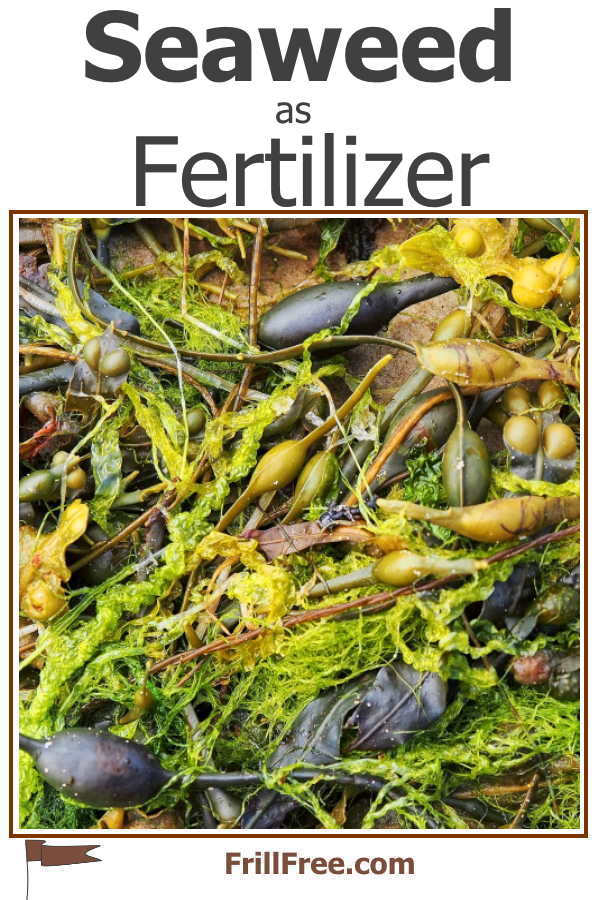- Homesteading
- Natural Fertilizer
- Seaweed as Fertilizer
Seaweed as Fertilizer
Are There Benefits?
Using Seaweed as Fertilizer is an ancient practice. Any people who lived near the ocean would gather this free resource to use as fertilizer on gardens.
In places like Newfoundland and Labrador, it's a common practice to glean the sea's bounty after a storm. Some of the best gardens on 'the rock' are based on a bed of sea weed.
Many places near the coast are rocky, and don't grow much in the way of plants to feed animals, or to use as cover crops or mulch. This means that to grow a garden to provide food, they would need to locate a material that is easy to gather, transport, and spread. Manure is not it.
Unless you have easy access to something light weight, that has high nitrogen in it, your garden will suffer.
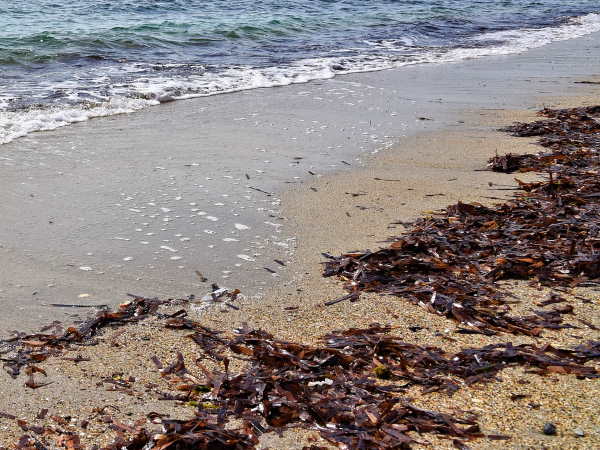 Seaweed on the beach after a high tide - ripe for the picking!
Seaweed on the beach after a high tide - ripe for the picking!Fortunately, seaweed is abundant at certain times of year (after winter storms, ready for the spring growing season).
It gets tossed high up on the beach, where it dries out. Added to that is that often, tiny crabs, fish and other small sea life get caught in it, which add even more nutrients. Mussels and barnacles could be in there too, which will smell a lot while they decompose.
Dogs in particular love this, so be warned!
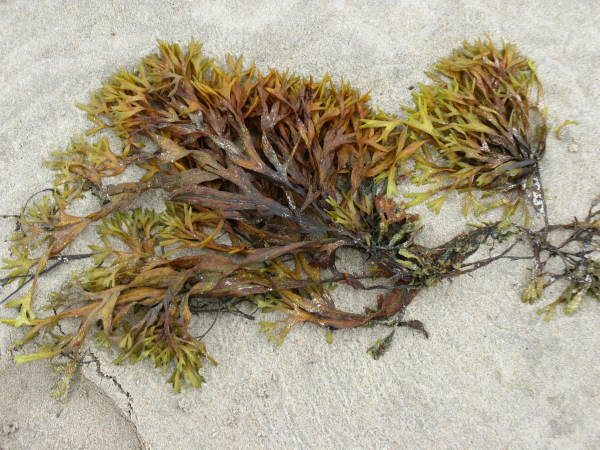 Bladderwrack waiting to be collected from the beach - those little blisters are easy to pop
Bladderwrack waiting to be collected from the beach - those little blisters are easy to popIf you're going to collect seaweed for your garden, try to wait until it's had a few rainfalls and from high up on the beach, so it's not as salty. Nothing will grow in salt.
If this doesn't get rinsed off naturally, you'll have to do it. I've seen screens set up where you would pile on the seaweed and rinse it off with fresh water, or wait for the rain to do it. This is one of the main disadvantages of collecting seaweed for your garden.
Then it's ready for use in the garden.
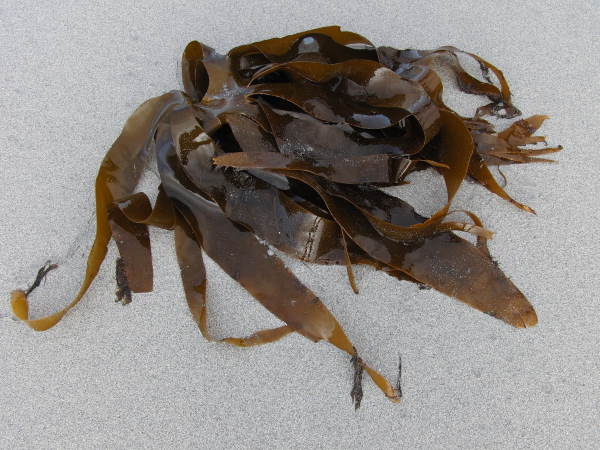 Kelp has long strands of very slippery fronds - sometimes called 'oar weed'
Kelp has long strands of very slippery fronds - sometimes called 'oar weed'So, get out there, take a bag or a wheelbarrow and a potato rake, and gather some of that free for the taking kelp or algae. There's lots more where that came from.
How To Use Seaweed as Fertilizer
If your seaweed is in the form of kelp, those long strips of slimy green stuff, chop it first before you add it to your garden. They will constantly tangle up if you don't.
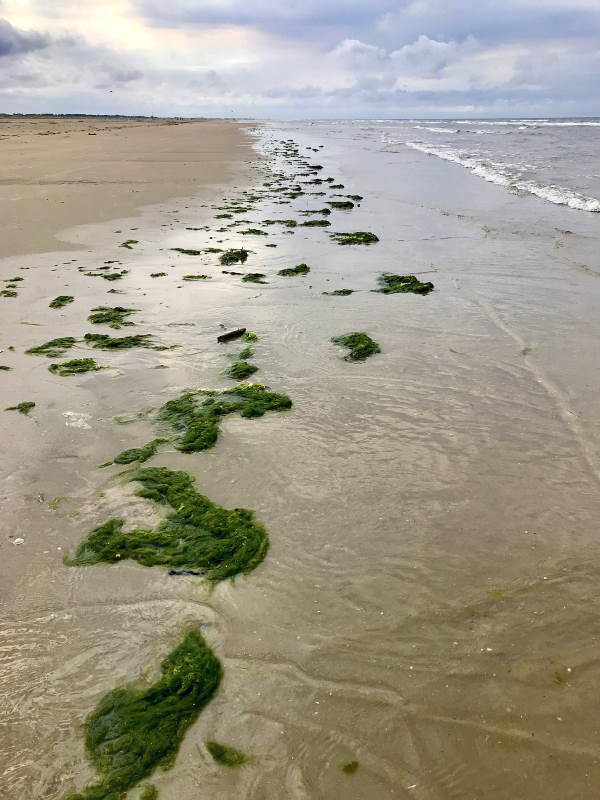 Large Algae, or Gutweed makes great fertilizer for your garden
Large Algae, or Gutweed makes great fertilizer for your gardenFor smaller types of seaweed, like Dulce, they can be chopped, or just laid on top of the soil. If they're dry, they crumble, so put them into a metal garbage can and use either a string trimmer, or pound it with a large stick to pulverize it.
Dig it in, or lay it around the plants as mulch to decompose in place. This might take a while, so you can't count on it as a nitrogen source unless you've done it for several years in a row.
Alternatively, you can compost it first, then add it to the garden in the fall.
Not living near the sea? There are other options, which left unchecked, become a real nuisance in fresh water. These are Eurasian Milfoil (escaped from aquariums by people who should know better) and Water Hyacinth.
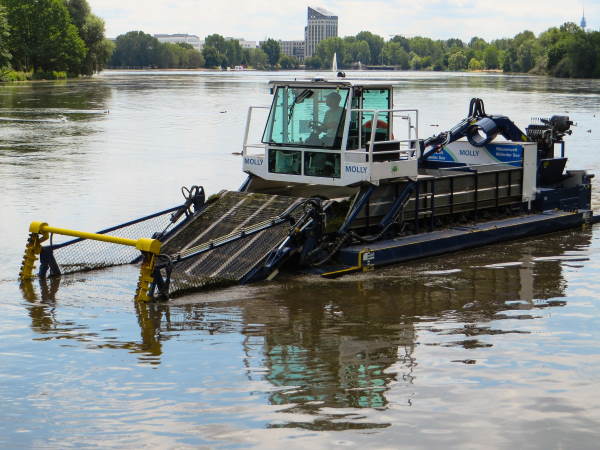 Eurasian Milfoil removal using special boats helps keep this pest in check
Eurasian Milfoil removal using special boats helps keep this pest in checkKeep your eyes open for the special boats that are fitted out with harvesting equipment and see if you can ask for some of the weed for your garden.
